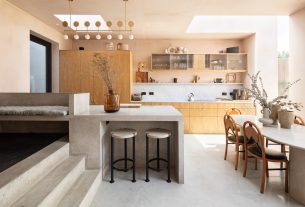If you are building or renovating and are preparing to enter the finishing phase, you have surely come across the following question, How to put plaster or putty on the walls?
Nowadays the alternatives and methods used in construction are the most diverse and it is really complicated to decide what the best process for your work is. Both plaster and putty are used to fill imperfections and level masonry surfaces in damp environments such as the living room, bedrooms and rooms other than bathrooms and kitchens. Get more info about the same now.
Surface Preparation
For the plaster to be applied efficiently and quickly, the surface must be level, without burrs. Ideally, the electrical part has already been finalized, the hydraulic part also, jambs stuck in the masonry and air conditioning infrastructure already installed.
It is important to wait at least 30 days after lifting the walls and ceilings to apply the plaster coating, because in this period the mortar has hardened and will not suffer deformation, the concrete has settled and the plaster too.
Remove dirt, nails and any object that may impair the coating application. Make sure the walls are flat.
Plaster Mixture
Plaster packs are usually sold in 40kg bags in powder. The gypsum powder must be mixed in water in a proportion of 36 to 40 liters of water for each bag and must follow a specific order:
- Fill the trough with water and sprinkle the powder so that it fills the trough equally.
- Let the dough stand for 8 to 10 minutes for the powder to dissolve.
- Then part of the paste should be mixed, leaving the rest still in the trough.
- Let the mixture stand for a further 3-5 minutes to induce the paste.
- Note the consistency of the paste, after this second waiting period, it can already be applied to the walls.
- At the end of the application of this first part of the mixture, the rest remaining at rest will be ready for use without the need for mixing.
Surface application
Using the smooth cast played
Always start the application from top to bottom and protect the floor from debris and spatter by covering everything with canvas. Use angles to finish corners and corners, they protect corners.
Wet the walls before applying the putty and on the ceiling make the application with a PVC tosser in and out. Then start the application on the walls, always from top to bottom. Be careful with the thickness, it should be between 1 and 3mm.
- The second coat should be applied immediately afterwards, crosswise to the first layer and with the aluminum ruler you should remove the excess and check the thickness according to the given references.
- Use the steel treadmill to level the surface well, eliminate ripples and flaws. Finally, apply the last layer to correct possible flaws and reach the desired final thickness. The final performance should be done very carefully and carefully until the surface is smooth and even.
Using the smooth plastered plaster
In this technique the applicator (or plasterer) makes guidelines and sets the height of the layers using taliscas. Taliscas are small ceramic pieces of rectangular shape that are fixed to the walls to delimit the thickness of the mass.
The spaces delimited by the masters and taliscas are filled with the plaster paste and the excess is removed with the aluminum ruler, as if you were passing a batten to level the mass. Finally, perform it very carefully, similar to that described in the process of applying smooth plaster performed.
Gypsum plasterboard or drywall?
Another plaster finish widely used in interior finishes and renovations is the drywall also known as drywall. This finish comes in plasterboard on cardboard. It’s practical, yet easier to install, the aesthetic finish is great and has a great aesthetic diversity.




